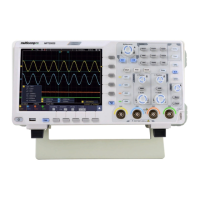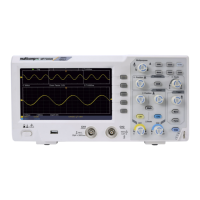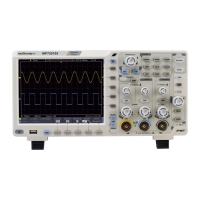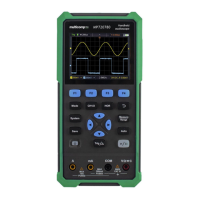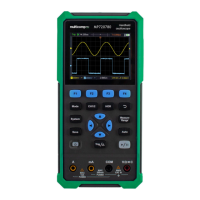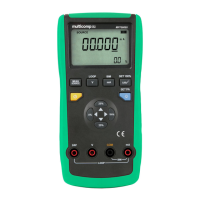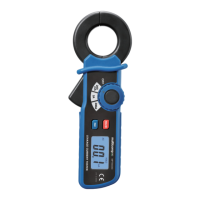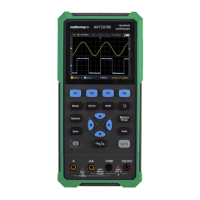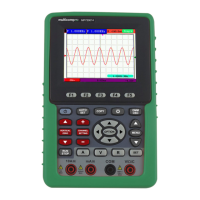User Manual
What is Nyquist frequency?
The Nyquist frequency is the highest frequency that any real-time digitizing oscilloscope
can acquire without aliasing. This frequency is half of the sample rate. Frequencies above
the Nyquist frequency will be under sampled, which causes aliasing. So pay more
attention to the relation between the frequency being sampled and measured.
Note:
In FFT mode, the following settings are prohibited:
1) Window set;
2) XY Format in Display SET;
3) Measure.
Digital Filter (Only for some models)
Low-pass filter: Pass signals with a frequency lower than a certain cutoff frequency
and attenuates signals with frequencies higher than the cutoff frequency.
High-pass filter: Pass signals with a frequency higher than a certain cutoff frequency
and attenuates signals with frequencies lower than the cutoff frequency.
Band-pass filter: Pass frequencies within a certain range and attenuates frequencies
outside that range.
Band-reject filter: Pass most frequencies unaltered, but attenuates those in a specific
range to very low levels. It is the opposite of a band-pass filter.
Cut-off frequency: A frequency characterizing a boundary between a passband and a
stopband. For example, as defined by a 3 dB corner (a frequency for which the output
of the circuit is −3 dB of the nominal passband value).
Order: The order of a filter is the degree of the approximating polynomial and in
passive filters corresponds to the number of elements required to build it. The higher
the order, the more the filter will approach the "ideal" filter; but also the longer the
impulse response is and the longer the latency will be. When the high frequency and
low frequency of the input signal differ significantly (i.e., 500 Hz – 50 kHz), the order
can be set to a small value, such as 29 to 35. When the difference between the high
frequency and low frequency is small (i.e., 10 kHz – 50 kHz), the order should be set
to a larger value, such as 128.
Use VERTICAL POSITION and VOLTS/DIV Rotary controls
1. The VERTIVAL POSITION rotary control is used to adjust the vertical
positions of the waveforms, including the captured waveforms and calculated
waveforms.
The analytic resolution of this control rotary control changes with the vertical
division.
2. The VOLTS/DIV rotary control is used to regulate the vertical resolution of the
wave forms, including the captured waveforms and calculated waveforms. The
sensitivity of the vertical division steps as 1-2-5. Turning clockwise to increase
